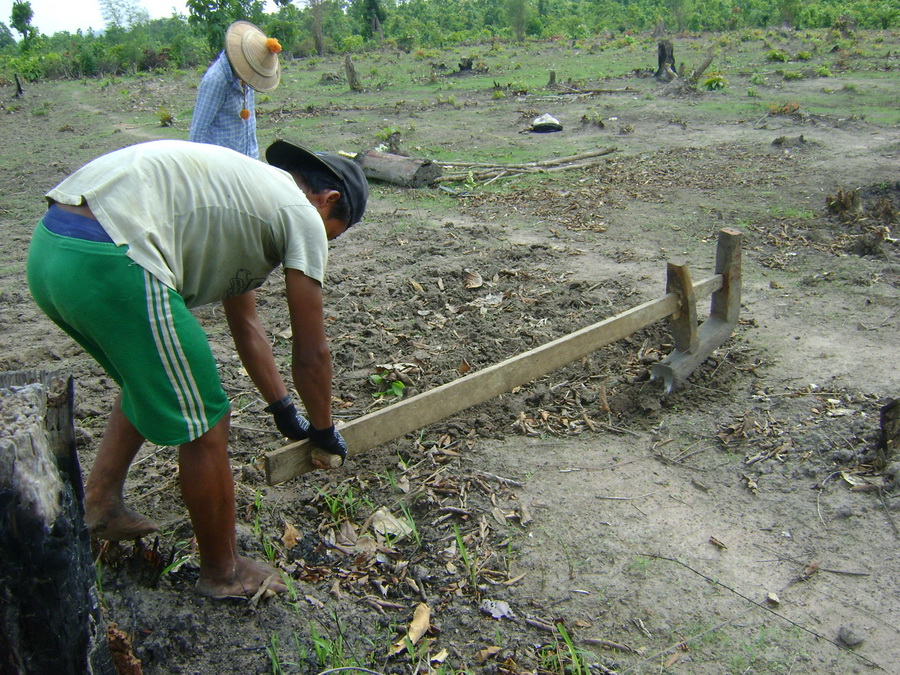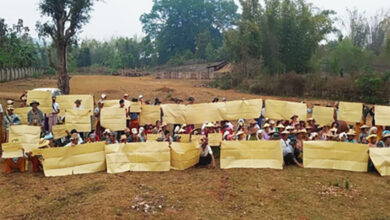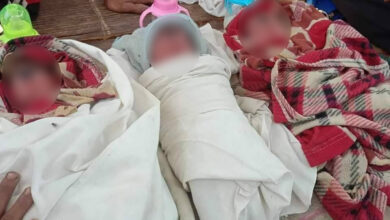A farmer’s story

Saw Moo Wah lives in Naung Bo village. His village is one of 11 that are situated along the Sittang River in Pegu Division in the southern central part of Burma. The local economy is based around its natural resources and agriculture. The major crop in Pegu Division is rice which uses about two thirds of the available agricultural land.
Saw Moo Wah tells his story to Karen News.
“In the past year there was not much rain and most farmers did not produce a good yield. The price of rice was 2,000kyat ($2) a basket, that is about 200,000kyat for a hundred baskets. We had a drought in the past year and could not produce a good yield for rice, but the price did not go up.
People in the area do not have money to buy rice. The villagers usually send their rice to nearby towns such as Mone and Kyauk Kyi, but in the past year people in Mone Town did not need to buy rice from Naung Bo villagers because there was already enough in the local market.
When selling their rice to the nearby towns or market our villagers don’t have a cart or truck to transport it, they have to rely on their bicycle to transport the rice. Villagers cannot afford to rent a truck to transport their rice to the towns. They can only carry one and half baskets on each trip and each time have to pay 200kyats at the [military] checkpoints. Town people or other villagers also have to use bicycle when they come and buy rice at our village and they too have to pay a fee of 200 kyats to the checkpoints for each sack of rice.
We have had flooding since August because they [authorities] released water from the P’Thit Chaung Dam. It caused damage to our crops and paddy. After they released of the water the first time we had to replant our rice as the paddy was ruined. The authorities, released water from the dam a second and a third time. This was a big problem for use and 50 percent of our paddy was ruin for this year. The villagers thought that the price of rice would go up as production would be down as a result of the damage caused by flooding.
Some paddy fields on higher ground survived the flooding, but just when the rice was ripening heavy rain ruined it.
High or low price for rice doesn’t matter in our area, we fear people cannot afford to buy our rice, as they don’t have money. This year some farmers produced enough rice for their families but there are others who won’t have enough to feed their families.
Only around 10% of the villagers in this area will have produced enough to feed their families. The majority of villagers do not own the paddy fields the farm. They work for those who have paddy field and get their rice for their families in this way. This year there will be problems for farmers who hired people to work in their paddy field because of the flood damage they will not produce enough rice to be able pay their workers.
The price of rice for one sack (three tins) is 10,000kyat ($10) and the daily wages for a worker is 1,000 kyats a day.
In this area after the harvest of rice in the paddy field people will grow groundnuts – one sack of groundnuts (three tins) is worth 30,000kyat. In the last year, there was either to much or not enough rain and farmers could not produce good quality groundnuts. This caused the price to fall and people did not buy the groundnuts as the quality was not very good.
Normally, villagers will get 30,000kyat for a sack of ground nuts, but this year they could only earn 2,000kyat to 3,000 kyat for a sack of ground nuts.
Villagers also raise pigs, chickens and ducks to make extra income. This year most of their pigs were infected by a disease and died. Income from raising animals helps villagers to earn money when they cannot produce enough rice for their families.
In our village tract there are two Burma Army bases one in Aun Law Sein and the other in Kyun Bin Seik.
Every night villagers are used by the army as security guards on the main road and in the day time villagers are ordered to cook and feed the army’s pigs and carry water and clean the army compound.
There are five guard huts and each hut has two villagers who have to be the security guard. They are forbidden to use mosquito nets and their only weapons are machetes and sling shot.
If a villager cannot go, they have to hire other people as their replacement and have to pay 2500 fine for each day they miss. The battalions located in the village tract are Light Infantry Brigades 590 and 599 – they bolster their numbers by combining with militias groups. The people militias are made up of villages from Kyon Bin Seik.
There are about 30-militia, these people do not own land and for their livelihood they join the people militia for their income. Villagers in this tract have to pay the militia – each militia member receives two and half baskets of rice for their monthly ration.
Every month villagers have to pay fees for security. There are different classes among villagers dependent on their income – some people pay 1,000kyat others 500 kyats and even the poor have to pay 300 kyat a month to the Army. Most of the villagers grow groundnut after the rice harvest time. Villagers have to donate a basket of groundnut and to the army camp.
To get the permission to live and work in their fields during planting and harvest the farmers have to pay 5,000 kyat for the permit to the army.
At night ethnic villagers are not allowed to travel to other villages or go out to their fields to stop thieves stealing their rice. There are ethnic Burman villagers close to Karen villages who do not own land or paddy fields so they steal our paddy at night – sometimes they even steal young rice to feed their cattle. These cases were reported to the army, but the Burma Army never takes any action.
Before the election the USDA and National Solidarity Party came to our village to campaign. They set up a telephone for our village tract. They promised to develop the village by building a hospital, a school and said they would reduce the price of daily commodities. All the villagers had to vote. After the election these Party members never came back.




